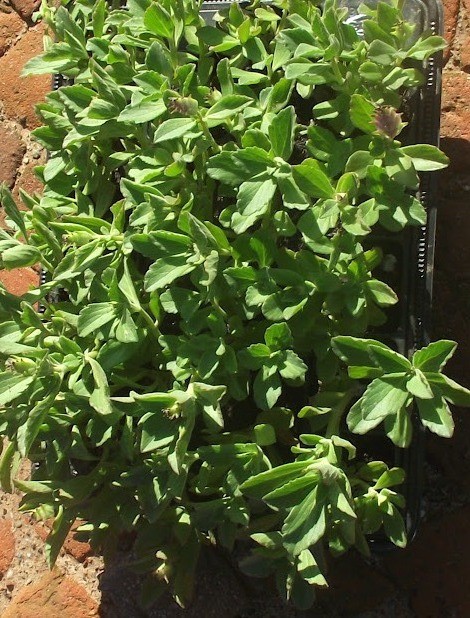Dune Crowberry
(Searsia crenata)

Description
Searsia crenata, previously known as Rhus crenata, (Dune crow-berry), is a species of Searsia that is native to South Africa, where it grows in frost-free and light frost areas, especially on beach sand dunes. This species is found along the southern coast of South Africa, from Cape Town as far east as the Kei river. Its favoured habitat is stabilised sand dunes. Sumac is any of about 35 species of flowering plants in the genus Rhus and related genera in the cashew family (Anacardiaceae). Sumacs grow in subtropical and temperate regions throughout the world, including East Asia, Africa, and North America. Sumac is used as a spice, as a dye, and in medicine. Sumacs are dioecious shrubs and small trees in the family Anacardiaceae that can reach a height of one to ten metres (3–33 ft). The leaves are usually pinnately compound, though some species have trifoliate or simple leaves. The flowers are in dense panicles or spikes 5–30 cm (2–12 in) long, each flower very small, greenish, creamy white or red, with five petals. The fruits are reddish, thin-fleshed drupes covered in varying levels of hairs at maturity and form dense clusters at branch tips, sometimes called sumac bobs. Sumacs propagate both by seed (spread by birds and other animals through their droppings), and by new shoots from rhizomes, forming large clonal colonies. The taxonomy of Rhus has a long history, with de Candolle proposing a subgeneric classification with 5 sections in 1825. At its largest circumscription, Rhus, with over 250 species, has been the largest genus in the family Anacardiaceae. Other authors used subgenera and placed some species in separate genera, hence the use of Rhus sensu lato and Rhus sensu stricto (s.s.). One classification uses two subgenera, Rhus (about 10 spp.) and Lobadium (about 25 spp.), while at the same time Cotinus, Duckera, Malosma, Metopium, Searsia and Toxicodendron segregated to create Rhus s.s.. Other genera that have been segregated include Actinocheita and Baronia. As defined, Rhus s.s. appears monophyletic by molecular phylogeny research. However the subgenera do not appear to be monophyletic. The larger subgenus, Lobadium, has been divided further into sections, Lobadium, Terebinthifolia. and Styphonia (two subsections).
Taxonomic tree:







